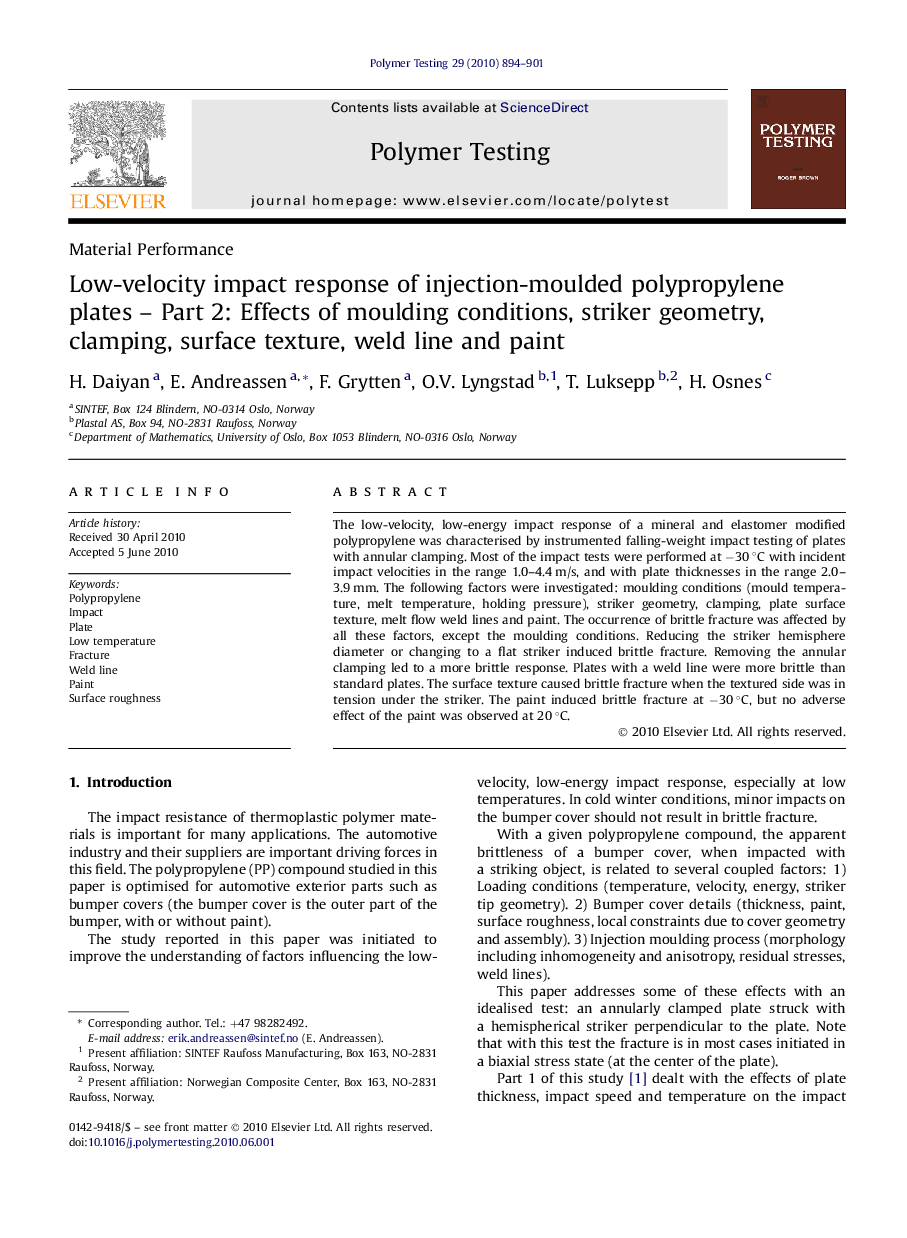| Article ID | Journal | Published Year | Pages | File Type |
|---|---|---|---|---|
| 5207195 | Polymer Testing | 2010 | 8 Pages |
Abstract
The low-velocity, low-energy impact response of a mineral and elastomer modified polypropylene was characterised by instrumented falling-weight impact testing of plates with annular clamping. Most of the impact tests were performed at â30 °C with incident impact velocities in the range 1.0-4.4 m/s, and with plate thicknesses in the range 2.0-3.9 mm. The following factors were investigated: moulding conditions (mould temperature, melt temperature, holding pressure), striker geometry, clamping, plate surface texture, melt flow weld lines and paint. The occurrence of brittle fracture was affected by all these factors, except the moulding conditions. Reducing the striker hemisphere diameter or changing to a flat striker induced brittle fracture. Removing the annular clamping led to a more brittle response. Plates with a weld line were more brittle than standard plates. The surface texture caused brittle fracture when the textured side was in tension under the striker. The paint induced brittle fracture at â30 °C, but no adverse effect of the paint was observed at 20 °C.
Related Topics
Physical Sciences and Engineering
Chemistry
Organic Chemistry
Authors
H. Daiyan, E. Andreassen, F. Grytten, O.V. Lyngstad, T. Luksepp, H. Osnes,
